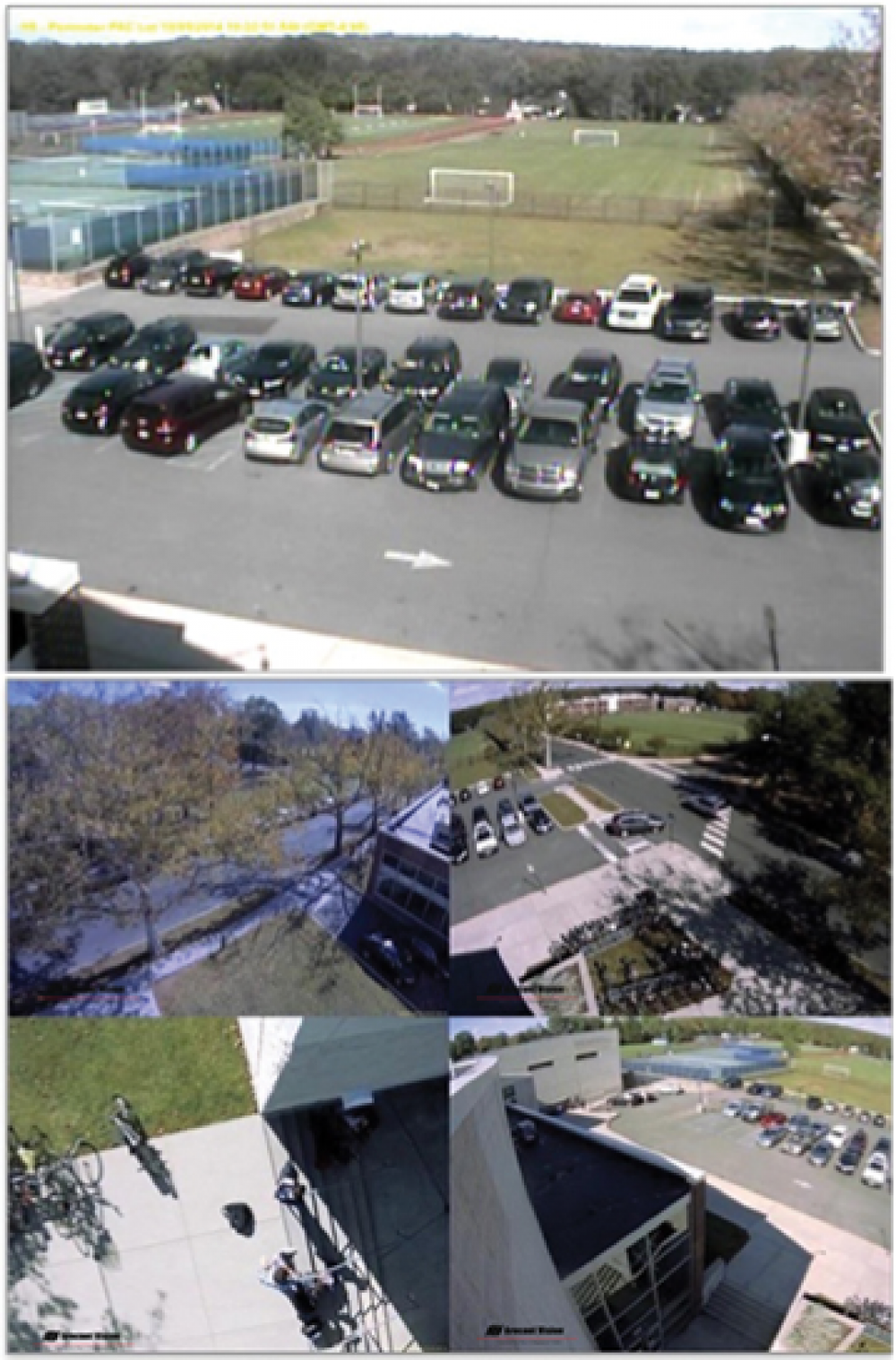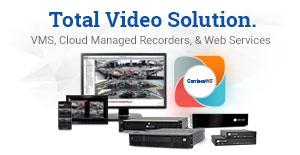PTZs: Valuable Tool or Obsolete Technology?

Recently, some research and anecdotal evidence have suggested a decline in the use of pan-tilt-zoom (PTZ) cameras compared with fixed megapixel cameras, which seems on its face to make sense. After all, the increasing resolution, low-light performance and other factors of megapixel cameras means they may be able to step in for PTZs.
But are PTZ cameras on their way out? That’s a complicated question with an even more complicated answer. In reality, comparing PTZs and megapixel cameras — whether single- or multi-sensor — is like comparing racehorses and workhorses.
“The market for PTZ cameras is definitely more niche than general megapixel cameras, even more so than in previous years,” says David Choi, product manager, Speco Technologies, Amityville, N.Y. “With megapixel camera and recorder prices dropping drastically in the past several years, many are choosing to just install multiple cameras pointing to different scenes and buying higher-channel recorders.”
The Mechanical Factor
One of the drawbacks of PTZs is their moving parts, which can be prone to failure. Once their sensors have been correctly focused, panoramic cameras, on the other hand, don’t have this potential limitation.
“In comparison to the motors, belts, and gears in PTZs that can fail or need frequent adjustment due to constant movement and usage, multi-sensor cameras are very low maintenance. This makes a multi-sensor very cost-effective and offering excellent ROI, while it also provides non-stop situational awareness of the scene,” says Jeff Whitney of Arecont Vision Costar.
Over the last 10 years, the market for PTZ cameras has diminished significantly, says Bret McGowan, senior vice president of sales and marketing, Vicon, Hauppage, N.Y. “Once a primary camera option for outdoor use, the market has shifted to fixed domes that offer higher resolution. The market for the fixed IP products has grown steadily as their price points continue to drop and their performance continues to improve,” he says.
However, Ron Grinfeld, global vertical marketing manager for FLIR Systems, Wilsonville, Ore., offers an opposing scenario. “For the most part, high-resolution cameras and PTZ cameras do not serve the same applications, which is one of the reasons for market growth for both types of camera products,” Grinfeld says.
Any market share that may have shifted away from PTZs seems to have been picked up by one of two main categories, says Harry Yang, director of project management for Hikvision America, City of Industry, Calif.
“By analyzing the existing markets, we can see that high-megapixel and panoramic/multi-sensor cameras have increased during the past few years, but regular PTZ product lines have decreased during the same period,” Yang says. “I found that the market share of PTZs split gradually into high megapixel and panoramic cameras according to the horizontal width of the field of view.”
According to Jeff Whitney, vice president of marketing for Glendale, Calif.-based Arecont Vision Costar, one reason dealers and integrators continue to deploy PTZs is familiarity.
“PTZ cameras are familiar technology, used for decades in security applications,” he says. “They cover a broad range of models, from low-cost cameras with poor optics to high-end, high-quality optic package models. The newest models feature megapixel technology, replacing much of the legacy analog cameras used in the past. This is not a growth market, but one that has a lot of adherents in the security industry still buying these products.”
Another reason for the continued deployment of PTZs is their zoom capability (see “It’s all About the Zoom” on page 90), which unfortunately comes at a cost.
“Although PTZ units’ true optical zoom capabilities are hard to match, many customers that use PTZ units will tell you that it was, in many cases, pointing the wrong way when an incident occurred,” McGowan says. “As fixed IP cameras have increased in resolution, they offer wider fields of view and greater pixels per foot. These improvements now offer a competitive digital zoom capability, both in live and on recorded video, which reduces blind spots and covers more area.”
All About the Zoom
The main benefit PTZ cameras offer over fixed megapixel models is zoom. Because PTZ employ optical zoom, they are capable of zooming in on a specific object, person or other area of interest much closer without distorting the image. The digital zoom that fixed megapixel cameras offer is much more limited.
“With digital zoom, you’re not going to get any additional information by zooming,” says Ryan Zatolokin of Axis Communications. “If you take a 5 megapixel camera displayed on a typical 1080p monitor — which is two megapixels — you can zoom in two and a half times without noticing any loss of detail or texture.”
PTZ cameras, on the other hand, can zoom 30-plus times without losing detail.
“That’s a huge difference, and you can really read a number plate or something because it’s laser sharp, even if it’s 1,000 feet away. You’re not going to get that with a 4K camera,” says Robert Wegner of Hanwha Techwin America.
While PTZ are best deployed in specialized situations, the zooming capabilities cannot be ignored when deciding which camera to employ.
“All things being equal, I definitely prefer an optical zoom to a digital zoom,” Zatolokin says.
Cost also factors into any shift — real or perceived — away from PTZ cameras.
“Always keep in mind PTZ cameras are normally more expensive because they have mechanical design so customers are a little hesitant to spend a lot of money for a device that has to be operated by a man or some automation,” says Robert Wegner, vice president, system application engineering and technical support, Hanwha Techwin America, Ridgefield Park, N.J.
Meanwhile, the opposite is true for megapixel camera prices.
“Higher megapixel models are becoming more affordable. The cameras themselves are costing less and, with the introduction of H.265 compression, so is the bandwidth and storage they require,” McGowan says. “By contrast, PTZ cameras are always going to have the built-in expense of motorized components, which drive up their purchase price and also cause them to require more maintenance.”
While they may not be the first choice for everyday surveillance, PTZ cameras do fill a valuable role, offering advantages for certain types of applications.
“Because PTZ cameras are best suited for applications that have a live operator, these cameras are specified far less often since the majority of surveillance applications do not require a full-time person monitoring a scene,” says Jennifer Hackenburg, senior product marketing manager, Dahua Technology, Irvine, Calif.
Ryan Zatolokin, business development manager and chief technologist, Axis Communications, Chelmsford, Mass., adds, “I always look at PTZ cameras as cameras that have a specific purpose.”
The ideal scenario would be a PTZ camera controlled by an operator or even controlled by another system such as radar or analytics, he says. “Where there are some smarts, whether it’s the human being or some other system controlling the PTZ, I think it becomes a very, very effective tool for diving in and investigating a high level of detail what’s going on.”
Analytics are probably the best application for PTZs because one analytic can trigger another one.
“You have one camera saying, ‘Hey, something’s going on there’ and sends it over to the PTZ,” Wegner explains. “And then the PTZ says, ‘Thank you. Let me check it out,’ and it zooms and turns on tracking, and it can follow an object. That’s the best type of application, when you have cameras talking to each other — if it’s designed correctly, of course.
While PTZ cameras haven’t disappeared, it’s clear that fixed megapixel cameras have had an impact on how widely they’re being deployed today.
“In the old days of analog cameras, PTZs were much more popular because you didn’t have the resolution you can get from a megapixel camera; so it was almost necessary that you had an operator looking at stuff using a PTZ camera,” Wegner says. “Now we have megapixel cameras where we can observe an entire area with a lot of detail, and that looks great.”
Where PTZs may once have been needed more widely, today they are being deployed more strategically in keeping with their particular capabilities.
LOOKING AHEAD
According to Grinfeld, PTZ cameras’ performance in certain situations makes it highly unlikely they will ever completely disappear from the security landscape, despite the mainstreaming of panoramic, hemispheric and multi-sensor cameras in recent years.
“PTZ cameras continue to be the first choice of integrators in applications where they were traditionally designed to serve, such as urban environments in safe city projects, wide area surveillance and when zoomed-in target tracking is required,” he says. “In parallel we see an increasing demand in panoramic cameras, multi-sensor 180- and 360-deg. cameras. This trend does not weaken the PTZ cameras’ marketplace, but fills a gap in areas where PTZs are not the ideal fit.”
The final choice of whether to use PTZ or fixed megapixel cameras for any installation must come down to the customer and their requirements.
Individual & Combined Uses
As is true for any security technology, the choice of camera depends on the application, the installation environment, and the needs of the end user.
“In situations where video is mainly being used forensically and is not being monitored live, integrators often choose to install fixed cameras, as there is typically not an operator present to control the PTZ camera,” says Chris Johnston, regional marketing manager, Bosch Security and Safety Systems, Fairport, N.Y. “This is common in small stores or office buildings and similar applications. In markets where active surveillance is common — such as gaming, large retail stores, corrections, critical infrastructure, and transportation — PTZ cameras are still prevalent as operators need to be able to follow the movements of people or objects and zoom in over large areas. In these applications, integrators are typically installing a mix of fixed and PTZ cameras.”
Using PTZ and fixed megapixel cameras in concert with each other provides the best of both worlds and can contribute to even greater security. The megapixel camera can record the entire scene and if something potentially malicious is detected, whether by an operator or analytics, the PTZ can zoom in optically and get a more detailed picture of that specific area without losing the overall view.
“In certain scenarios, we shouldn’t be thinking of this as an either/or proposition; instead it may make sense to use both types of cameras,” says Bret McGowan of Vicon. “An installation that combines the best of both can sometimes provide a superior solution, so it’s important that as our industry focuses more and more on megapixel options, that we don’t categorically dismiss the strengths of PTZs and what they can still deliver.”
















